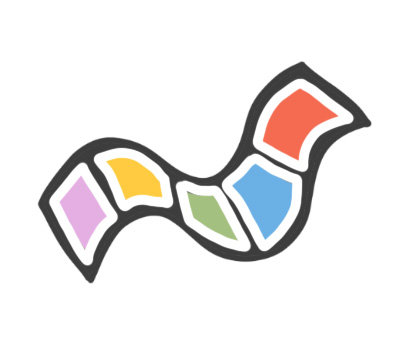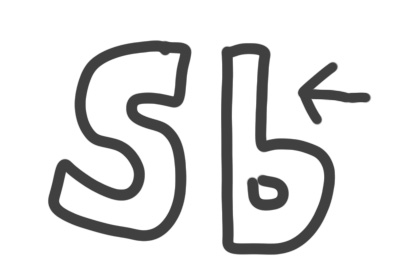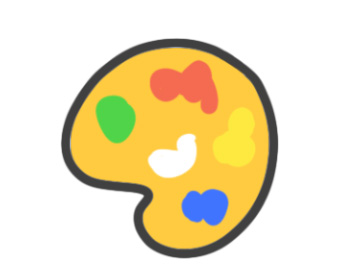
img-2-img
This method adds noise on top of an input image, which is then removed by the model’s denoising process. Because the model’s image-generation process is to progressively remove noise until only the final image remains, this method is essentially converting the input image into a ‘partially-generated’ image, which the model just needs to finish off.
I like to think of it as it rewinding the input image halfway, and then allowing the generation process to continue in a new direction.
Denoising strength
This is the amount of noise added, and consequently the amount of denoising steps that will be required to complete the regeneration of the input image. If you set a higher strength like 0.9, the model will need to redo 90% of the denoising steps to get back to back to a finished image.
I often generate images at 20 steps, which would mean that at 0.9, the model will need to ‘redo’ 18 of the steps. Going lower than 0.6 (12 steps needing to be redone) typically means that your output image will be very similar to your input image. The first steps have a much larger impact on the final image that the last few steps, which are more focused on the final details of the image.
In this grid you can see the effect of a higher denoising strength as you move down the rows. The top row has not had as much noise added, so requires less denoising, which means the images in that row didn’t have much room to drift during the re-generation process. They stayed somewhat similar to the original image, which is at the top of this page.
![]()
LoRA model weight
The setting responsible for the columns (Additional Network weight) is the degree that the custom LoRA model I trained is applied in the generation process. The higher this setting is, the more the LoRA model will influence the genrated image. Up until 1 this means that the images will exhibit more of the concept that the LoRA model was trained on. Past 1 and you’re asking for trouble though, as the concept is applied too much.
The top left corner of this grid shows where the LoRA model has the least effect on the output image. Not only is the ‘weight’ here set to only half, but the denoising strength is set to a low 0.65, which means there are fewer generation steps to needed to regenerate the image back to being a finish image, which means that there is less opportunity to influence the generation process.
The opposite is true in the bottom right corner, where barely any trace remains of the original image, meaning that there is much more opportunity for the LoRA model (here at full strength) to exert an influence on the generation process.
You can also see how the weight of the LoRA model has more effect at higher denoising strengths. This is for the same reason. When there is more opportunity to travel away from the original image, the effect that this setting is having will be more noticeable.
This method adds noise on top of an input image, which is then removed by the model’s denoising process. Because the model’s image-generation process is to progressively remove noise until only the final image remains, this method is essentially converting the input image into a ‘partially-generated’ image, which the model just needs to finish off.
I like to think of it as it rewinding the input image halfway, and then allowing the generation process to continue in a new direction.
Denoising strength
This is the amount of noise added, and consequently the amount of denoising steps that will be required to complete the regeneration of the input image. If you set a higher strength like 0.9, the model will need to redo 90% of the denoising steps to get back to back to a finished image.
I often generate images at 20 steps, which would mean that at 0.9, the model will need to ‘redo’ 18 of the steps. Going lower than 0.6 (12 steps needing to be redone) typically means that your output image will be very similar to your input image. The first steps have a much larger impact on the final image that the last few steps, which are more focused on the final details of the image.
In this grid you can see the effect of a higher denoising strength as you move down the rows. The top row has not had as much noise added, so requires less denoising, which means the images in that row didn’t have much room to drift during the re-generation process. They stayed somewhat similar to the original image, which is at the top of this page.

LoRA model weight
The setting responsible for the columns (Additional Network weight) is the degree that the custom LoRA model I trained is applied in the generation process. The higher this setting is, the more the LoRA model will influence the genrated image. Up until 1 this means that the images will exhibit more of the concept that the LoRA model was trained on. Past 1 and you’re asking for trouble though, as the concept is applied too much.
The top left corner of this grid shows where the LoRA model has the least effect on the output image. Not only is the ‘weight’ here set to only half, but the denoising strength is set to a low 0.65, which means there are fewer generation steps to needed to regenerate the image back to being a finish image, which means that there is less opportunity to influence the generation process.
The opposite is true in the bottom right corner, where barely any trace remains of the original image, meaning that there is much more opportunity for the LoRA model (here at full strength) to exert an influence on the generation process.
You can also see how the weight of the LoRA model has more effect at higher denoising strengths. This is for the same reason. When there is more opportunity to travel away from the original image, the effect that this setting is having will be more noticeable.












